A New Wave of Female Designers Are Changing Menswear as We Know It
Grace Wales Bonner, Priya Ahluwalia, Emily Adams Bode, and Bianca Saunders are designing clothes that aren't just for men.

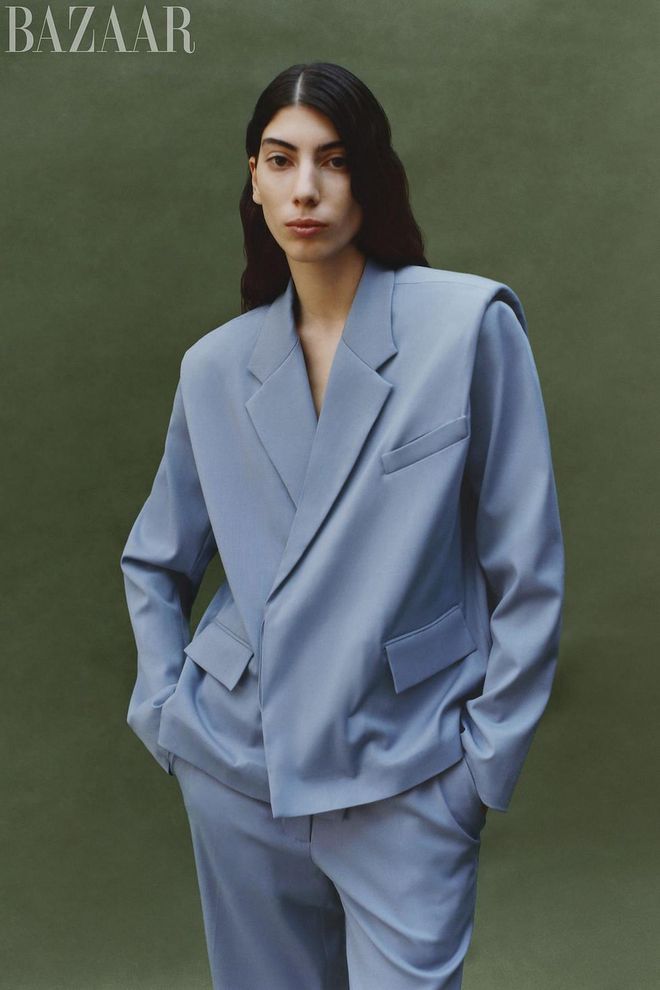
Bianca Saunders blazer and trousers. (Photos: Emmanuel Sanchez-Monsalve)
With its tweeds, ties, pocket squares, and often arcane rules about everything from label shapes to the appropriate weight for shirt fabric, the world of menswear has been slow to embrace change. It wasn’t until 2017 that Emily Adams Bode became the first female designer to present a menswear collection at New York Fashion Week. She adhered to parts of the conventional male dress code while eschewing its fussiness, presenting tailored options made from upcycled quilts and finished with intricate embroideries that infused workwear silhouettes with feminine handcraft traditions. Although the collection got picked up by a number of top retailers, Bode initially found its reception by certain establishment gatekeepers less than welcoming. “There was this group of boys who went to Pitti together,” she recalls, referring to Pitti Uomo, the Florence trade show that doubles as a street-style showcase for a coterie of preening menswear influencers. “Some of these guys would come into my showroom and say, ‘You know, Emily, this kind of shirting will never sell.’ ”
Related article: How Marine Serre, Gucci, Prada, And More Are Fashioning A Sustainable Future
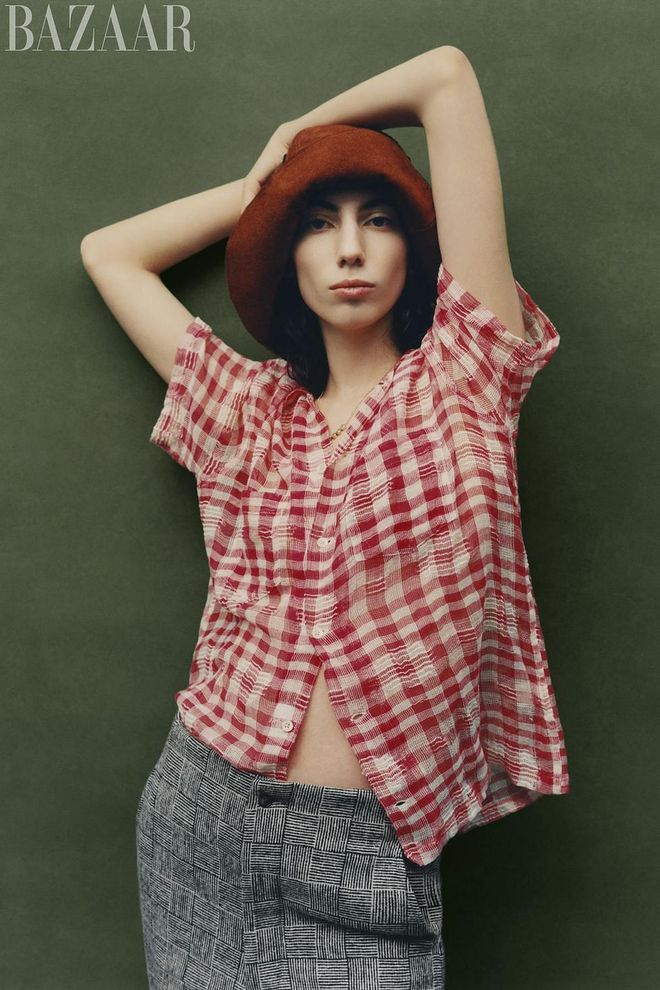
Bode top, pants, and hat; Bernard James necklace; G.H. Bass & Co. weejuns. (Photos: Emmanuel Sanchez-Monsalve)
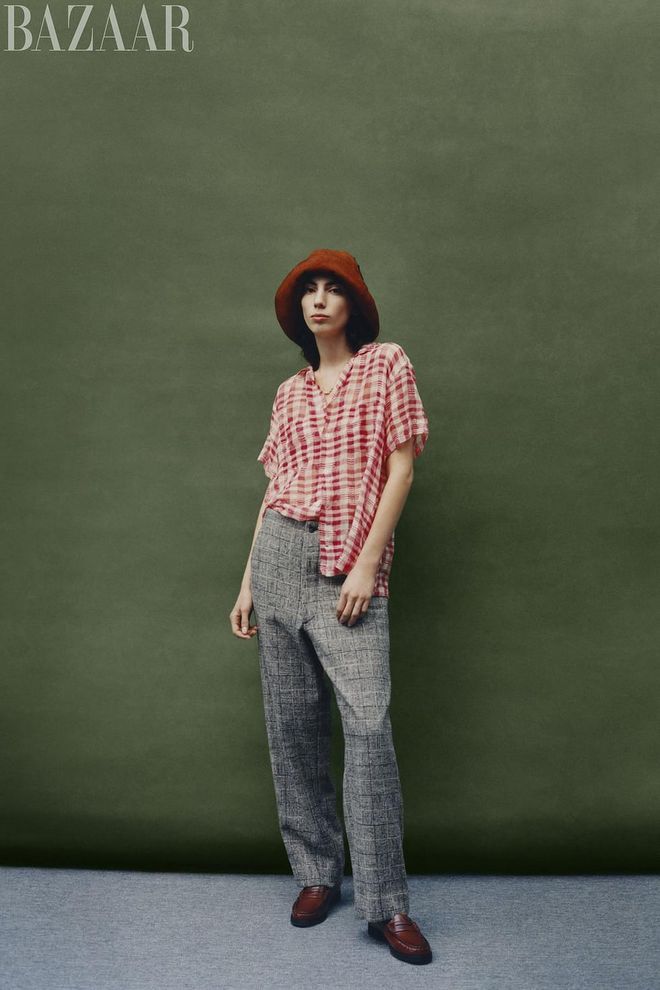
Photo: Emmanuel Sanchez-Monsalve
But sell it did. Not only to men willing to try a button-down made from a material other than oxford or poplin but also to a whole other customer base: women. According to Bridget Brennan of the marketing consulting firm Female Factor, “Even if a woman isn’t buying something for herself, like men’s apparel, she is often the influencer behind somebody else’s buying decision.” It’s less common that many of Bode’s female customers are also shopping for themselves. “What’s been really inspiring is seeing couples who come and shop together, and share clothes,” says Bode, who was named the CFDA Emerging Designer of the Year in 2019. “Or maybe she bought her dad a jacket, and then steals it because they’re living together right now during the pandemic.” To accommodate the more expansive size range of her customer base, Bode leaves a four-inch fabric allowance in the waistbands of her pants, or adds side ties or back buckles so they can be adjusted, meaning a single pair could, for example, fit anyone between a size 27 and 36.
Bode follows a slew of London-based female designers who have been making inroads in the male-dominated menswear space. While male designers have long ruled menswear (and womenswear), it wasn’t until very recently that women began designing for men. They have blurred the binary as they’ve upended fusty tailoring decrees, welcoming a broader and more diverse clientele. Martine Rose broke into the old boys club in the late aughts, setting the stage for 2016 LVMH Prize winner Grace Wales Bonner’s rise to global prominence in the past decade as well as the current ascension of Bianca Saunders and Priya Ahluwalia, both 2019 British Fashion Council NewGen recipients and 2020 GucciFest honourees.
Related article: Sustainable Fashion: New Designers Are Rethinking The Way They Create
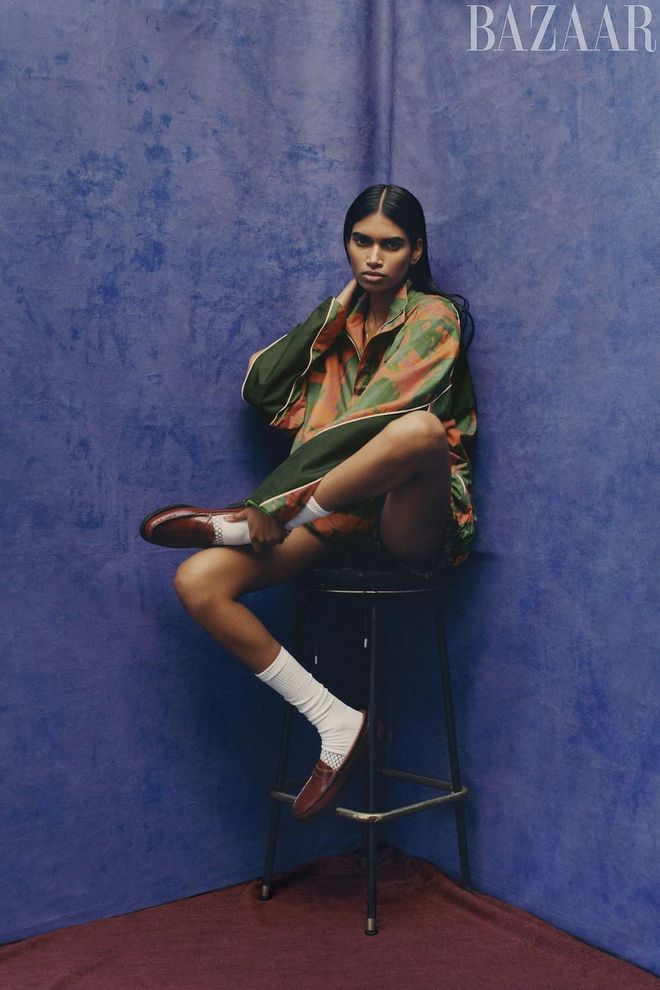
Ahluwalia jacket and shorts; Bernard James necklace; Bombas socks; G.H. Bass & Co. weejuns. (Photo: Emmanuel Sanchez-Monsalve)
The London-based e-retailer MatchesFashion carries a robust selection on both its men’s and women’s verticals of their labels, all of which put forward a more inclusive vision of masculinity by centering BIPOC cultures. “They all bring a softer edge that I think is appreciated by men but is very appreciated as well by women,” says Natalie Kingham, global fashion officer for MatchesFashion, who counts herself among them. “I tend to suit men’s cut trousers better than I do women’s cut trousers,” she adds. “And when I speak to other women who have a similar body shape to me—a boyish figure, narrow hips, and not a tiny waist—they’re like, ‘Yeah, we all buy men’s trousers.’ ”
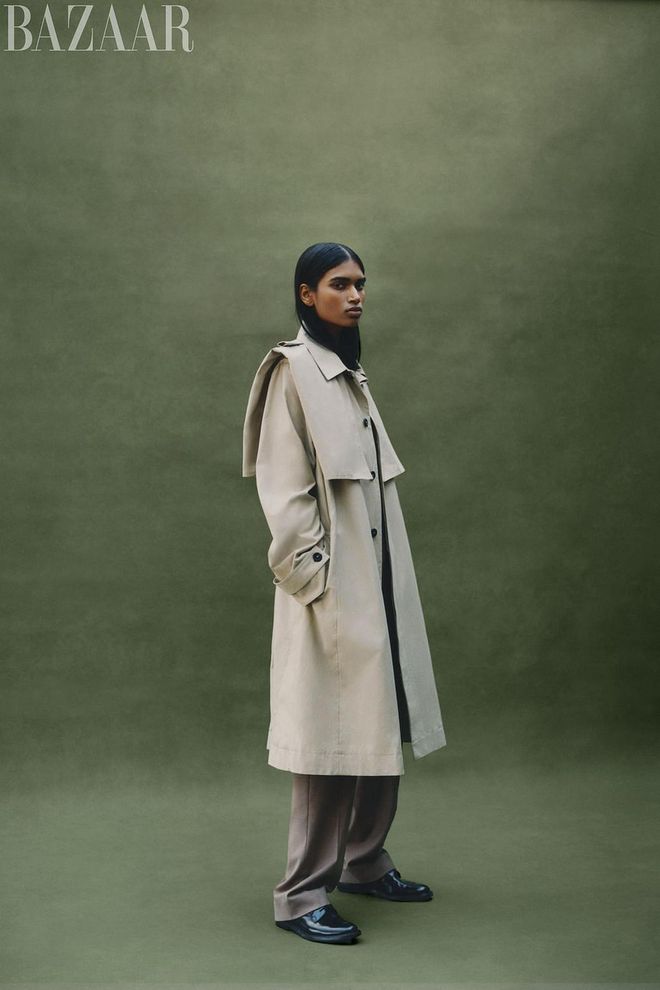
Bianca Saunders jacket, and pants; Church’s shoes. (Photo: Emmanuel Sanchez-Monsalve)
The desire to challenge gender norms is part of what drew Wales Bonner to menswear. “There is a certain set of rules and restrictions, which is what also attracted me to tailoring,” says the designer, whose recent triptych of collections have explored diasporic connections between Great Britain and the Caribbean. “I like working within frameworks because you can be quite disruptive. There are subtle changes that can be made to menswear pieces that give them a new or deeper meaning.” For instance, the softer colour palette of her Spring 2021 slimline tracksuit, in pink with ivory crochet, made in collaboration with Adidas Originals, takes its cue from the classic 1972 Jamaican crime film, The Harder They Come, starring Jimmy Cliff, which is often credited with helping to popularise reggae around the world.
Related article: 8 Asian Sustainable Fashion Brands Making A Splash In The Industry
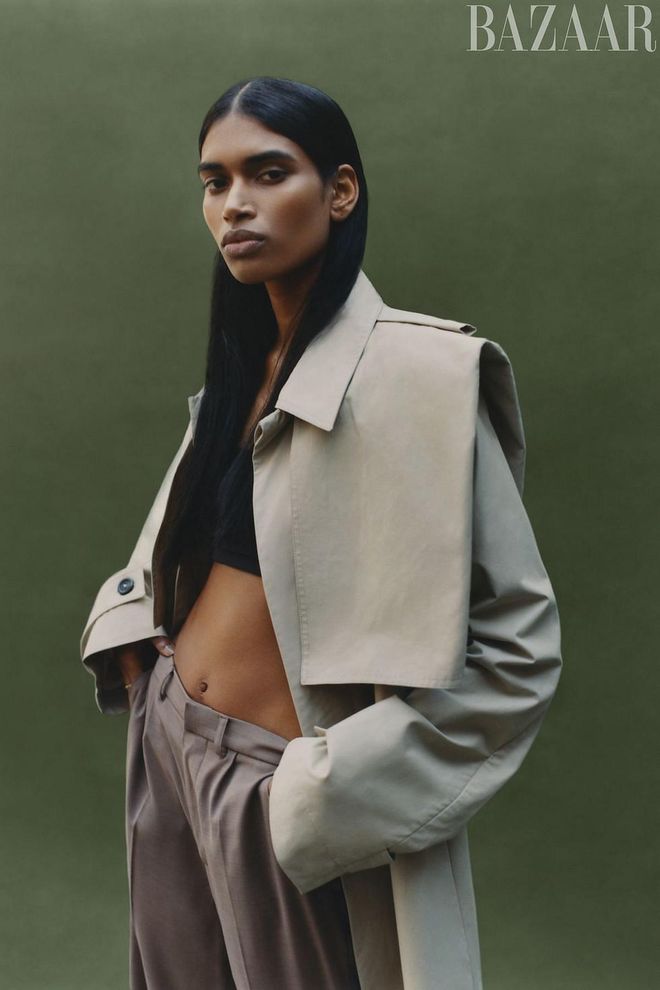
Bianca Saunders jacket, and pants; Church’s shoes. (Photo: Emmanuel Sanchez-Monsalve)
Saunders’s designs are an ongoing exploration of her own Jamaican roots and the interplay between softness and strength. Her signature jacket is unlined, save for prominent shoulder pads sitting on top of the sleeve heads. Saunders’s Spring 2021 collection film, The Ideal Man, references artist Hans Eijkelboom’s 1978 photo series of the same name, in which he fashioned himself in portraits to fit women’s descriptions of their perfect partners. Saunders flips the script by invoking the language of ballroom culture to have her protagonists embody categories, such as “Man Going to His First Ball in Heels” and “Gully Queen at His Engagement Party,” that celebrate the LGBTQ+ community in Jamaica. “The idea of character-building has been very important for me because I want to show how people can transform themselves from one side to the other and be very flexible,” Saunders says.
Related article: These Singaporean Fashion Collectives Are Rewriting the Rules
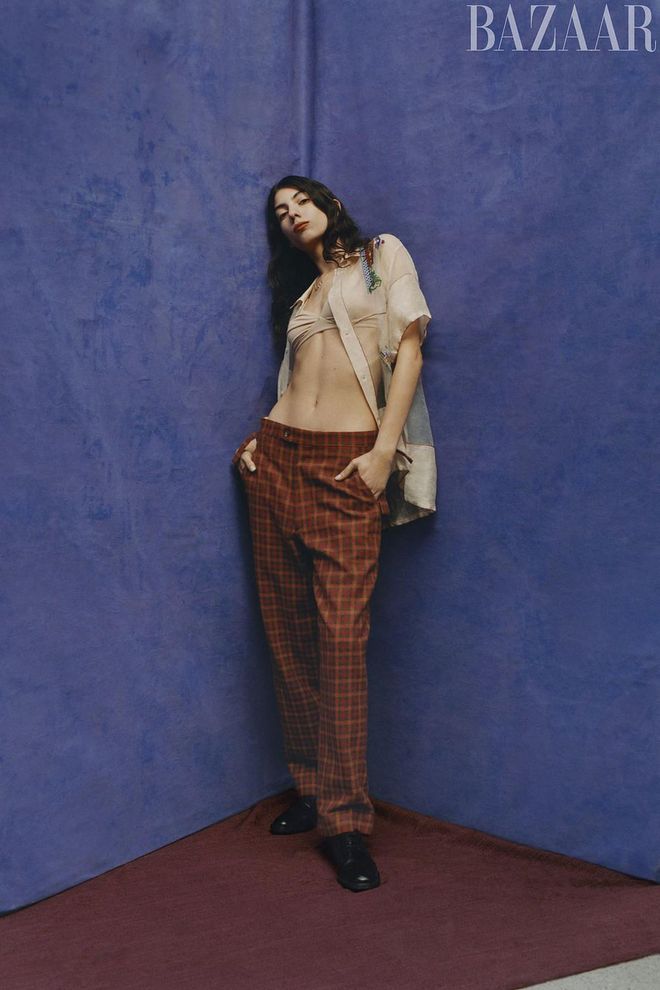
Bode shirt; Hanro bra; Bernard James necklace; Church's shoes. (Photo: Emmanuel Sanchez-Monsalve)
Priya Ahluwalia, who has added co-winner of the 2020 LVMH Prize and 2021 winner of the Queen Elizabeth II Award for British Design to her ever-growing list of accomplishments, is not one for binary categories. She incorporates elements of her Nigerian and Indian heritage, which can be seen in the beading, embroideries, and punchy colours that characterise her collections. For Spring 2021, she drew inspiration from the charts and graphs in W. E. B. Du Bois’s Data Portraits: Visualizing Black America for the abstract wave patterns she created in collaboration with the Lagos-born graphic designer Dennis McInnes that play across her jersey, cotton, and denim pieces. “I get tagged in pictures from men and women, all different ages as well, which I love,” says Ahluwalia. “I think that our ideas of what menswear and womenswear are have completely changed. It’s not even about those two genders, is it? There are so many different people across the spectrum. I’m just here for anyone, really.”
Related article: Gender-Fluid Fashion Finally Enters the Mainstream

Wales Bonner cardigan. (Photo: Emmanuel Sanchez-Monsalve)
Photographs by Emmanuel Sanchez-Monsalve
Styling by Milton Dixon III
Models: Öykü Baştaş and Andrea Ramlall
Hair: Gonn Kinoshita for Amika
Makeup: Asami Matsuda for Shiseido
Manicures: Aja Walton for Essie
This article originally appeared in the April 2021 issue of Harper's BAZAAR US